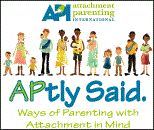As I was dropping Violet off at daycare one morning last week, I responded to a fellow parent's innocent inquiry as to how I was doing with an honest "I'm tired." Violet, never a sound sleeper, has been even more restless the past few weeks, and it's taken a toll on Eric and me. After a year and half of living with a baby with high nighttime needs, we can withstand a significant sleep deprivation, but the holidays (and the four new teeth that came with them) seemed to amplify our issues. By the second week in January, we were back to the all-night nurse-a-thons we thought we'd left behind months ago.
Historically, Violet’s sleep patterns have been inconsistent enough to give us the occasional reprieve. A few nights of waking to nurse only once or twice could restore us sufficiently to withstand the less peaceful episodes that were sure to follow. But last week we realized we – more accurately I - wasn’t going to be able to ride this most recent regression out. Violet had appointed me her human pacifier, refusing to sleep without being latched on. Though I am more patient as a parent than I ever imagined I could be, I have my limits, and we had reached them.
So when this friendly father said "how are you?" I told him: I'm tired. The adorable, energetic toddler you just saw me waving goodbye to is up at least every hour these days. In my experience, such confessions are often met with a well-intentioned explanation of when and how the person I'm speaking with applied the cry-it-out technique with their own child, and how well they've been sleeping ever since. This conversation was no exception. But while I appreciate the suggestion, and I certainly envy the image of uninterrupted sleep, I'm still not comfortable with the concept of "cry it out."
Eric and I agreed we needed to do something differently, but weren’t willing to resort to letting Violet cry it out alone. Instead, we decided it was time for her to (partially) nightwean. At seventeen months, she no longer needs to nurse for nutrition overnight, and though we hated to remove that source of comfort, her increasing dependence on it was making the family bed unbearable. We were familiar with Dr. Jay Gordon’s gentle approach to nightweaning, and using it as a guide decided to designate the hours of 10 pm – 5 am as “time to sleep,” during which we would offer Violet comfort in any form except nursing.
For a few nights, I left the room when she woke, so as not to further frustrate her. Eric could soothe her in my absence by letting her lay on top of him, but we soon saw that while that was effective at settling her, ultimately we weren't making any progress at getting her to sleep unattached to one of us. Last night, we took the option of Dada's chest off the table, and the nightweaning began in earnest. Denied her two preferred sleep associations, Violet protested first angrily, and eventually with heartbreaking, hiccuping sobs. But as she struggled, we stayed beside her, rubbing her back, singing softly, whispering in her ear. Eventually she fell asleep, nestled between us.
We expect it to take Violet some time to adjust to this new nighttime routine, and we are committed to working through that with her. We also understand that nightweaning may not reduce her nightwaking (though certainly that is the hope). But even if she continues to wake frequently, nightweaning will allow us to identify other ways to soothe her back to sleep that will afford us more flexibility in our nighttime parenting. In the meantime, we'll accept any peacefully sleeping baby vibes sent our direction.
For inspiration:






